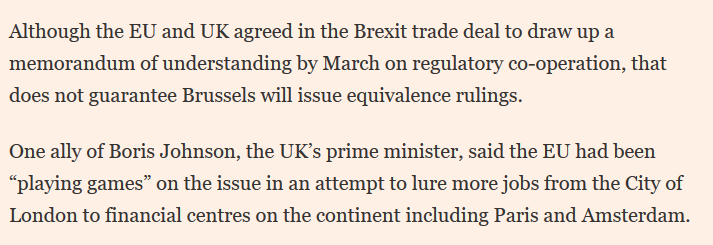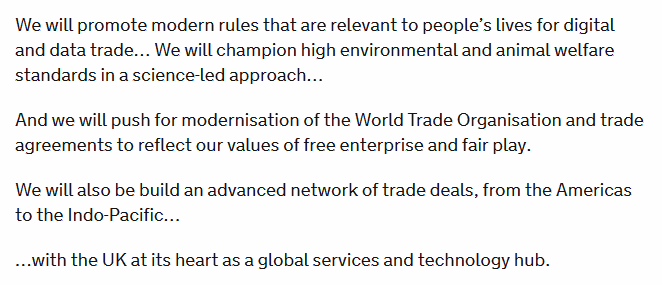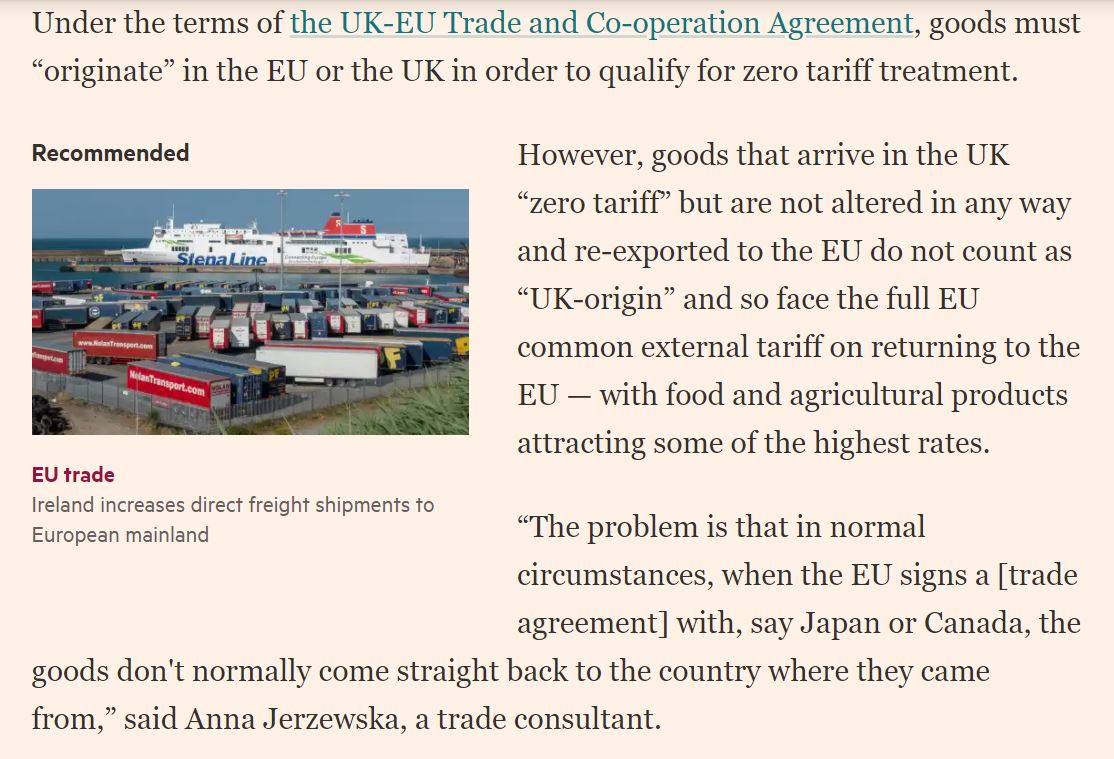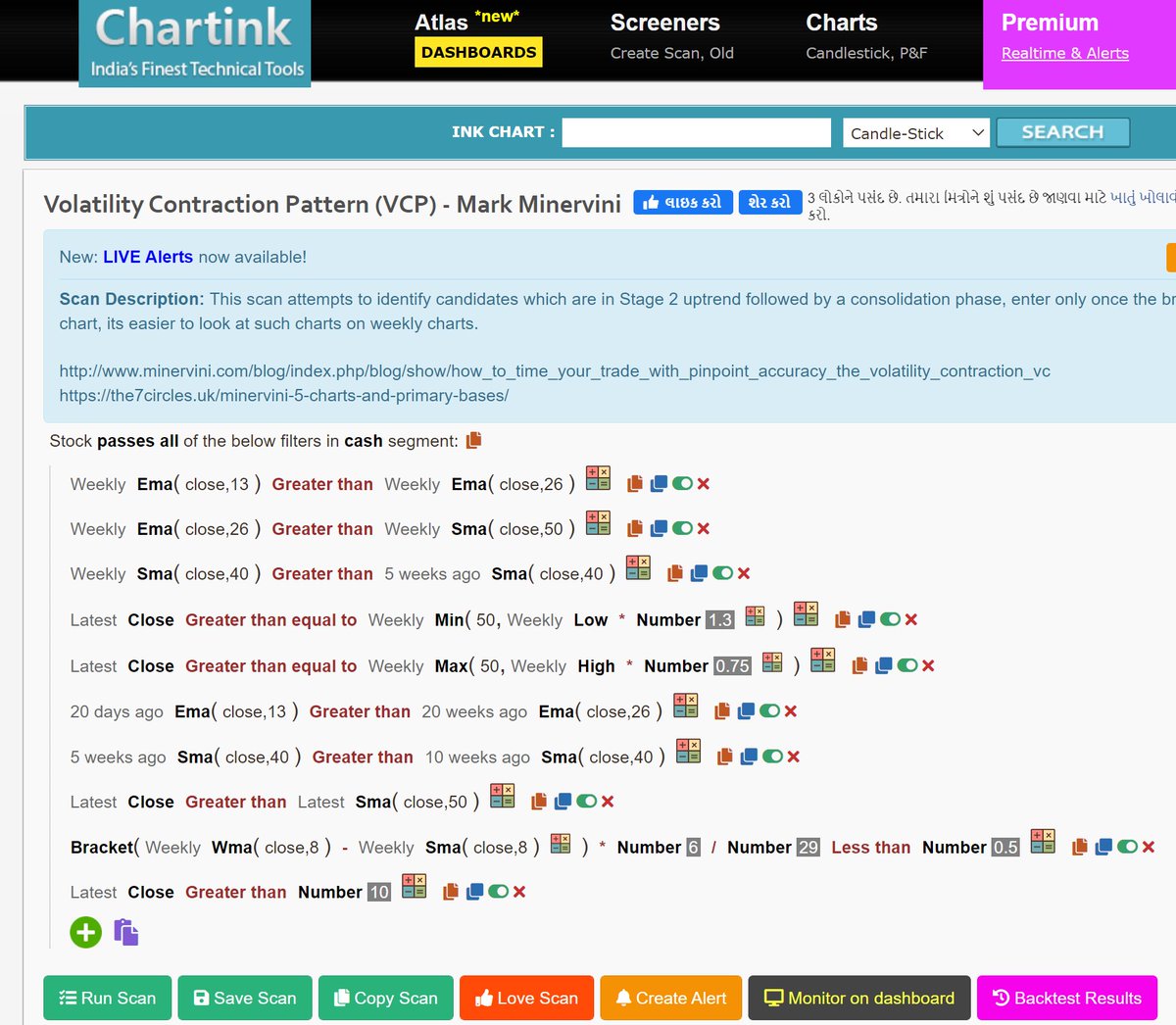This amounts to a 25% value reduction for the EU gradually over this period
Ok, here's my first bash at how I think UK-EU fisheries will be managed in future now we have the agreement
It’s quite complicated in parts, so would appreciate any corrections…
@StevePeers @BD_Stew @AntonSpisak (& others)
This amounts to a 25% value reduction for the EU gradually over this period
By 31 Jan, a schedule must be agreed for talks, culminating in final agreement by 10 December (this fits in with the internal EU fisheries negotiation)
I.e. it continues the status quo but prevents a fish grab in the provisional period
Further provisional access can be negotiated thereafter if there's still no overall agreement
This basically has three levels:
1) reduction of fishing access and tariffs on fish
2) tariffs on other goods
3) suspension of other parts of the trade and economic partnership
In other words, they don’t have to apply 1) and 2) first
i.e. one side could warn the other that provisional access would not continue in 2 weeks' time, but retaliation couldn’t apply until then
If it’s yes and yes, then fine; if it’s no to either, they must be removed or changed
However, doing so would also automatically terminate the trade, aviation and road transport sections (a high price!)
i.e. if UK terminated in May 2021, EU fishing rights would continue until the end of December 2022
More from Brexit
So many stories of new barriers to trade between UK and EU, but you might be thinking at some point these will run out. The government is certainly hoping so. Well they may slow down, but trade relations and regulations are not static, and changes will lead to further problems.
The likelihood of continued trade problems for a £650 bn trade relationship is why there should be a huge cross-government effort led by the Foreign Office and Department for International Trade to put in place the necessary resources to seek best results.
There isn't.
So the UK's relationship with the EU currently consists of two not particularly good deals and no consistent effort to manage current problems or prevent future ones. Joint committees are a second order problem to putting in place the right internal structures.
But that's been the consistent UK problem in relations with the EU since 2016. Lack of focus on getting the right internal structures, people, asks, strategy, too much attention on being tough and a single leader.
News just in. This doesn't necessarily mean the right structure being put into UK-EU relations. I suspect Frost's main role is to ensure no renegotiations with the EU.
Also, wonder what this says about the PM's trust in Michael Gove?
The likelihood of continued trade problems for a £650 bn trade relationship is why there should be a huge cross-government effort led by the Foreign Office and Department for International Trade to put in place the necessary resources to seek best results.
There isn't.
So the UK's relationship with the EU currently consists of two not particularly good deals and no consistent effort to manage current problems or prevent future ones. Joint committees are a second order problem to putting in place the right internal structures.
But that's been the consistent UK problem in relations with the EU since 2016. Lack of focus on getting the right internal structures, people, asks, strategy, too much attention on being tough and a single leader.
News just in. This doesn't necessarily mean the right structure being put into UK-EU relations. I suspect Frost's main role is to ensure no renegotiations with the EU.
Also, wonder what this says about the PM's trust in Michael Gove?
NEW: David Frost is joining Boris Johnson\u2019s Cabinet! The peer has been appointed a minister at the Cabinet Office, effective March 1.
— Sebastian Payne (@SebastianEPayne) February 17, 2021
Frost will also chair the partnership council overseeing the UK-EU trade deal and oversee reform to "maximise on the opportunities of Brexit"
You May Also Like
A list of cool websites you might now know about
A thread 🧵
1) Learn Anything - Search tools for knowledge discovery that helps you understand any topic through the most efficient
2) Grad Speeches - Discover the best commencement speeches.
This website is made by me
3) What does the Internet Think - Find out what the internet thinks about anything
4) https://t.co/vuhT6jVItx - Send notes that will self-destruct after being read.
A thread 🧵
1) Learn Anything - Search tools for knowledge discovery that helps you understand any topic through the most efficient
2) Grad Speeches - Discover the best commencement speeches.
This website is made by me
3) What does the Internet Think - Find out what the internet thinks about anything
4) https://t.co/vuhT6jVItx - Send notes that will self-destruct after being read.

















